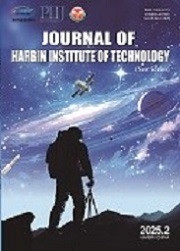| Related citation: | NI Qing-wei,YE Ren-zhen,YANG Feng-lin,LEI Kun.Evolution algorithm for water storage forecasting response to climate change with little data sets:the Wolonghu Wetland,China[J].Journal of Harbin Institute Of Technology(New Series),2011,18(2):127-133.DOI:10.11916/j.issn.1005-9113.2011.02.025. |
|
| Author Name | Affiliation | | NI Qing-wei | School of Environmental & Biological Science & Technology,Dalian University of Technology,Dalian 116024,China
Chinese Research of Enviromental Sciences,Beijing 100012,China | | YE Ren-zhen | Huazhong Agricultral University,Wuhan 430070,China | | YANG Feng-lin | Chinese Research of Enviromental Sciences,Beijing 100012,China | | LEI Kun | Chinese Research of Enviromental Sciences,Beijing 100012,China |
|
| Abstract: |
| An attempt of applying a novel genetic programming(GP) technique,a new member of evolution algorithms,has been made to predict the water storage of Wolonghu wetland response to the climate change in northeastern part of China with little data set.Fourteen years(1993-2006) of annual water storage and climatic data set of the wetland were taken for model training and testing.The results of simulations and predictions illustrated a good fit between calculated water storage and observed values(MAPE=9.47,r=0.99).By comparison,a multilayer perceptron(MLP)(a popular artificial neural network model) method and a grey model(GM) with the same data set were applied for performances estimation.It was found that GP technique had better performances than the other two methods both in the simulation step and predicting phase and the results were analyzed and discussed.The case study confirmed that GP method is a promising way for wetland managers to make a quick estimation of fluctuations of water storage in some wetlands under condition of little data set. |
| Key words: water storage little data set evolution algorism Wolonghu wetland |
| DOI:10.11916/j.issn.1005-9113.2011.02.025 |
| Clc Number:X37 |
| Fund: |






